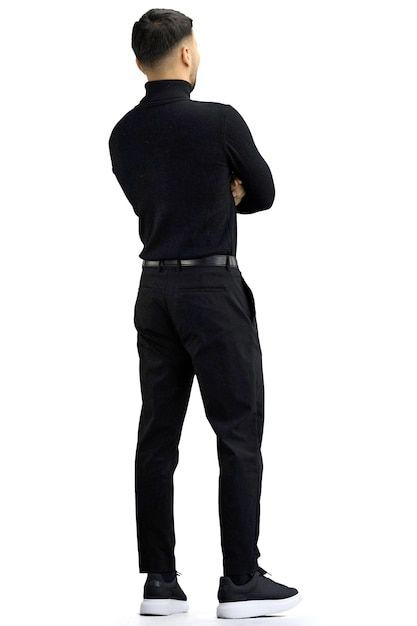The Stress of Prolonged Standing
- Staff

- Aug 8
- 4 min read
Updated: Nov 17
Walk around for 30 minutes, and you won’t feel a thing in your feet, but stand in a single spot for the same amount of time and it’s likely that your feet will start hurting. Why is that?

Anyone who’s ever been standing on their feet for a long time knows that it’s more tiring than walking the same amount of time. Retail workers, teachers, nurses, chefs, cooks, hair stylists and wait staff working long shifts experience the strain caused by prolonged standing. It is a common issue faced by those who work in jobs that require long hours on their feet. But the stress of prolonged standing can affect anyone. Why is standing in one place harder than walking and what can you do to make it more tolerable?
Standing in one place for an extended period of time takes effort as the muscle groups in your feet and legs constantly engage to keep you upright.
The amount of concentrated muscular effort and tension in a prolonged standing state is continuous. When walking, tension and relaxation are alternately repeated. The muscles in each foot and leg share the stress as one foot strikes than is raised and replaced by the other.
Another reason why standing on your feet for a long time of time is much more tiring than walking the same amount of time is that when you stationary stand in one place too long without movement, the blood and lymph fluids begin to collect in the feet and lower extremity. Without movement the blood flow becomes sluggish, making it difficult for oxygen-rich blood to reach our lower extremities efficiently. The result is that the muscles in your lower extremity tire more easily and do not operate at peak efficiency compared to when you walk around.
Standing in one position for extended periods of time on a regular basis can cause a multitude of problems. Sore feet, tendonitis, swelling of the legs, varicose veins, low back pain and stiffness of the neck and shoulders may result.
Lifestyle Modifications
Prolonged standing is a real problem. Becoming aware of the possible risks of standing in one place for an extended period of time is the first step in making necessary adjustments to your routine with effective lifestyle changes and preventive ways to eliminate the effects of the stress of standing. To make long periods of standing tolerable you need to
Promote circulation by walking
Take frequent breaks
Perform simple stretches for the legs, back, and feet throughout the day to relieve tension and improve circulation
Use ergonomic accessories, a foot rail or footrest to shift body weight between your feet and reduce pressure points
Stay hydrated. Hydration plays a vital role in preventing discomfort caused by standing in one place for a long time. Drinking enough water throughout the day helps maintain optimal blood flow and prevents the stress of prolonged standing
Evaluate your foot gear. A podiatric physician can assess the anatomy of your foot and lower extremity and the biomechanical implications of your gait and suggest the proper foot gear or the need for an assistive orthotic insert that can compensate for any imbalance or abnormality.
Schedule an appointment with your family doctor to address any underlying systemic problems that may be contributing to the stress of prolonged standing
10 stretches if you stand all day at work
Standing calf raises
Standing tall just slowly lift up on to your toes and lower back down. Repeat 10 times as often as you like.
Torso twists
Lift your elbows up and rotate your body from side to side to mobilize the spine and all the muscle through your core.
Quad stretch
Bend your knee and lift your foot up towards your bottom. Press your hips forward and keep knees together to stretch the quads of the front of your thigh. Hold for 30 seconds.
Forward fold
Soften your knees and gently roll forward from your hips and down through your spine into a forward fold to release tension on your spine and stretch your low back and hamstrings.
Chest stretch
Reach your arms behind you, interlace your finger and lift up as much as you can to stretch across your chest and the front of your shoulders.
Shoulder shrugs and rolls
Shrug your shoulders up tight towards your ears and then drop them down and press away from your ears. Then lift them up and roll them forwards and then backwards 5 times each. This helps to activate and then release tight upper traps in the neck and shoulders.
Upper back stretch
Gently drop your chin to your chest, interlace your fingers and press your hands forward as you round your upper back to stretch the muscles in your upper back and around your shoulder blades.
Side reach
Reach one arm up overhead and bend to one side, reaching your arm up and over to stretch all down your side, hold for 20 seconds and repeat on the other side.
Forearm stretch
Use one hand to grasp the finger of the opposite hand, gently press your fingers backwards until your feel a stretch in the inside of your wrists/forearms. Repeat but pressing the fingers forwards to feel the stretch on the back of your forearms.
Neck stretch
Tilt your chin down to your chest, then gently tilt your ear towards one shoulder, then the other, hold each position for 20 seconds, you can add resistance by gently pressing down on your head with your hand.



Comments